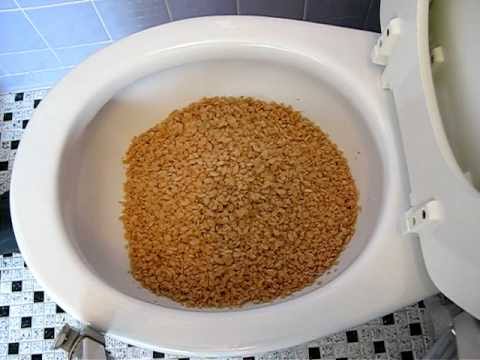Are You Allowed to Dispose of Food Down the Toilet?
Are You Allowed to Dispose of Food Down the Toilet?
Blog Article
Just about everyone maintains their own individual ideas with regards to Think Twice Before Flushing Food Down Your Toilet.

Introduction
Many individuals are often confronted with the predicament of what to do with food waste, especially when it comes to leftovers or scraps. One usual concern that occurs is whether it's all right to flush food down the bathroom. In this article, we'll look into the reasons why individuals might consider purging food, the effects of doing so, and different techniques for appropriate disposal.
Reasons that individuals might consider flushing food
Lack of awareness
Some people might not understand the prospective damage brought on by purging food down the commode. They may incorrectly think that it's a safe method.
Benefit
Flushing food down the commode may seem like a quick and easy remedy to dealing with undesirable scraps, particularly when there's no close-by trash bin offered.
Idleness
In some cases, people might just select to flush food out of large idleness, without taking into consideration the consequences of their actions.
Consequences of flushing food down the commode
Environmental influence
Food waste that ends up in waterways can add to pollution and injury aquatic ecosystems. Additionally, the water used to purge food can stress water sources.
Plumbing issues
Flushing food can bring about stopped up pipelines and drains pipes, triggering costly plumbing fixings and inconveniences.
Kinds of food that should not be purged
Coarse foods
Foods with fibrous appearances such as celery or corn husks can obtain entangled in pipes and create blockages.
Starchy foods
Starchy foods like pasta and rice can absorb water and swell, leading to obstructions in pipelines.
Oils and fats
Greasy foods like bacon or cooking oils must never be flushed down the commode as they can strengthen and create obstructions.
Appropriate disposal approaches for food waste
Using a waste disposal unit
For homes equipped with waste disposal unit, food scraps can be ground up and flushed with the plumbing system. Nonetheless, not all foods appropriate for disposal in this manner.
Recycling
Certain food product packaging materials can be reused, decreasing waste and lessening ecological impact.
Composting
Composting is a green method to get rid of food waste. Organic materials can be composted and used to improve dirt for gardening.
The relevance of appropriate waste management
Reducing ecological injury
Appropriate waste administration practices, such as composting and recycling, assistance minimize contamination and maintain natural deposits for future generations.
Protecting plumbing systems
By staying clear of the practice of flushing food down the commode, house owners can prevent expensive plumbing repair services and preserve the honesty of their plumbing systems.
Verdict
Finally, while it may be tempting to flush food down the commode for convenience, it is essential to recognize the potential repercussions of this activity. By embracing appropriate waste monitoring methods and dealing with food waste properly, individuals can contribute to healthier plumbing systems and a cleaner setting for all.
FLUSH FOOD DOWN THE TOILET?
FLUSHING FOOD CAN CAUSE BLOCKED DRAINS IN YOUR HOME
All of the plumbing fixtures in your home are connected to the same sewer pipe outside of your home. This outdoor sewer pipe is responsible for transporting all the wastewater from your home to the Council sewer mains. Even small pieces of food that go down the kitchen sink can cause problems for your sewer. It should therefore be obvious that flushing larger bits of food, such as meat, risks a clog in either the toilet itself or the sewer pipes. Flushing greasy food is even more problematic because oil coagulates when it cools, coating the interior lining of your pipes.
THE TOILET IS NOT A BIN
Food isn’t the only thing that people shouldn’t be flushing down the toilet. People use the toilet to dispose of all kinds of things such as tampons, makeup wipes, dental floss, kitty litter and even underwear. Water goes to great lengths to educate residents about the high costs and stress placed on wastewater treatment systems simply from people flushing the wrong stuff down the toilet. It costs taxpayers millions of dollars each year, and homeowners thousands in blocked drain repairs.
FLUSHING FOOD IS A WASTE OF WATER
Flushing food is a waste of our most precious resource - water. In June this year Level 1 water restrictions were introduced to protect water supply from drought conditions. Much of New South Wales continues to be affected by prolonged drought with recent figures revealing up to 97 per cent of the state remains in drought. Depending on whether you have a single or dual flush toilet, every single flush uses between five and 11 litres of water. In the current climate this is a huge amount of water to be wasting on flushing food that should be placed in the bin (or better yet, the compost).
https://www.jabplumbingsolutions.com.au/blog/can-you-flush-food-down-the-toilet

Do you like reading about Flushing Food Down the Toilet?? Give a short review directly below. We will be pleased to hear your insights about this piece. We are looking forward that you come back again in the future. Liked our entry? Please share it. Let someone else check it out. Thanks for taking the time to read it.
Automated Marketing Report this page